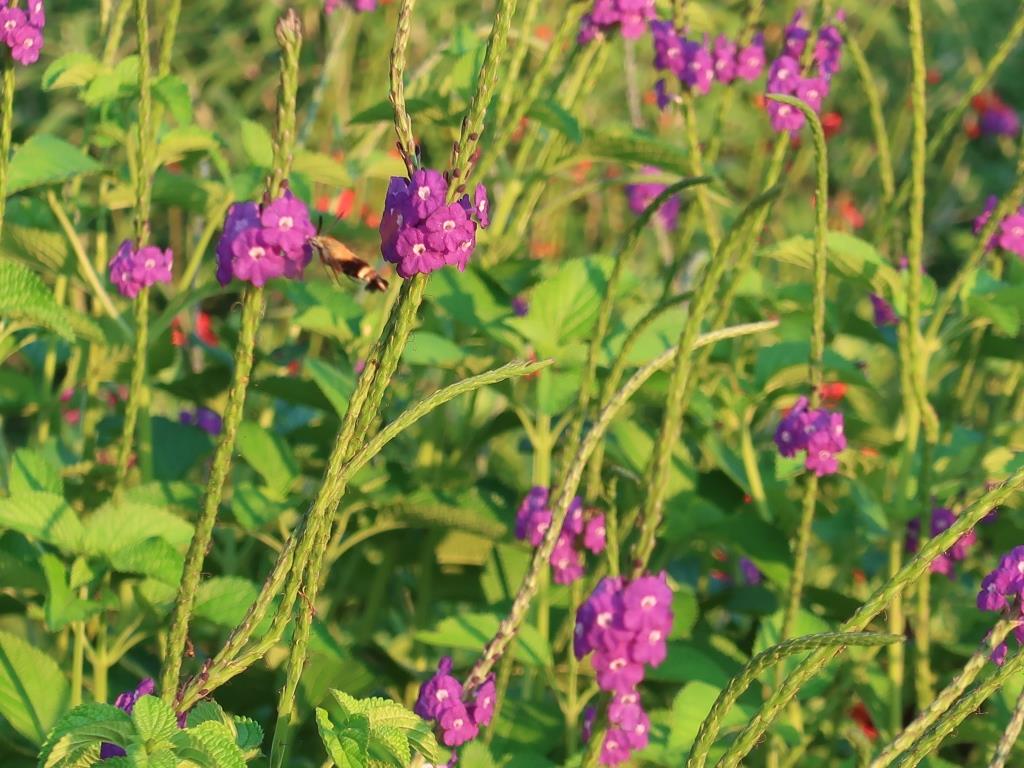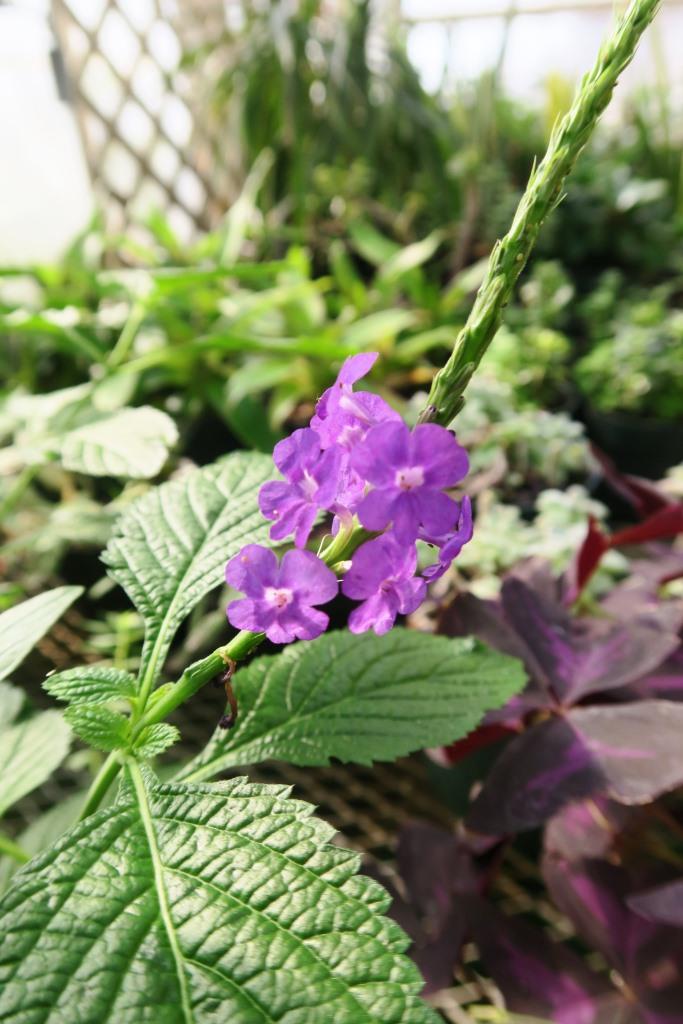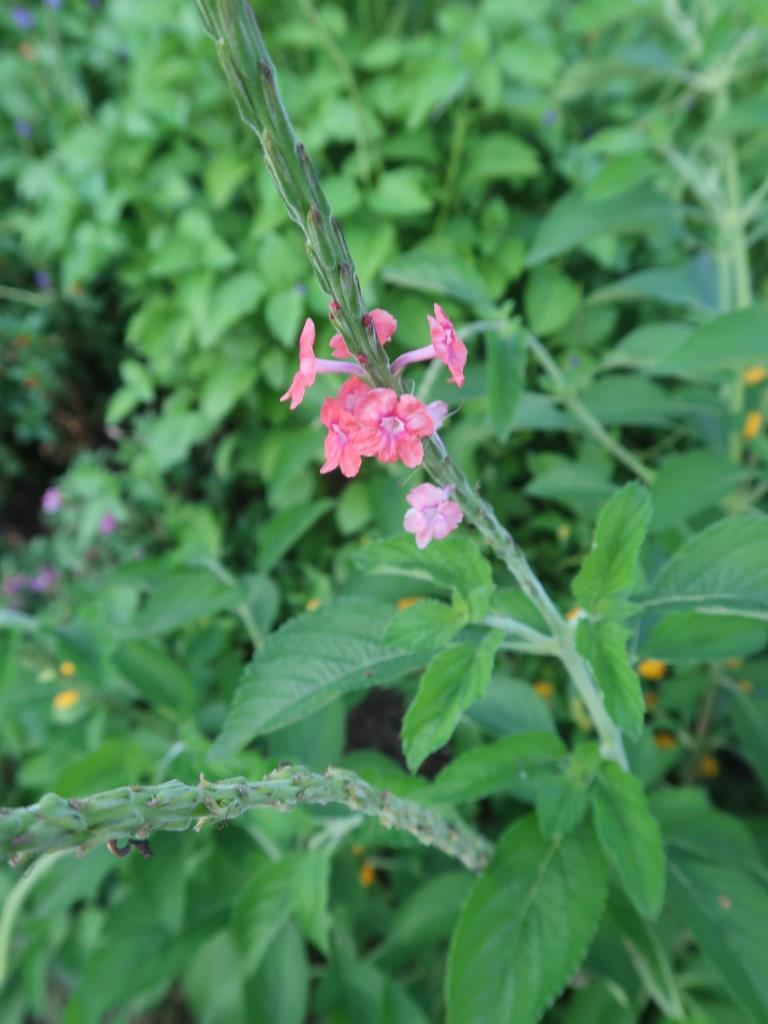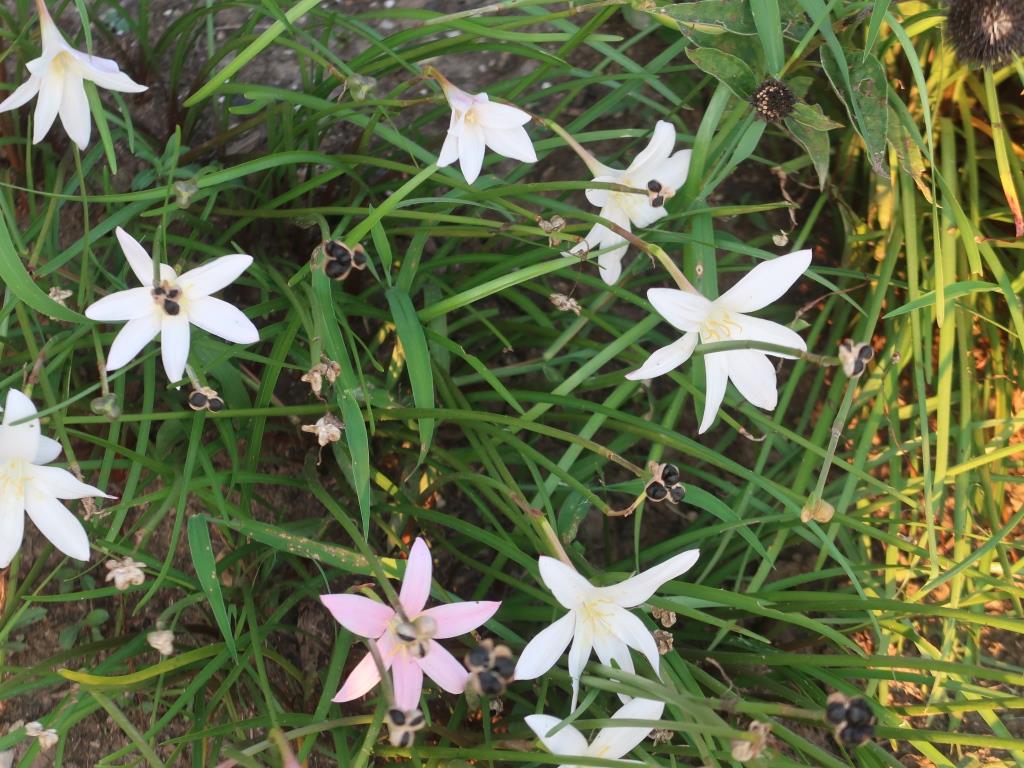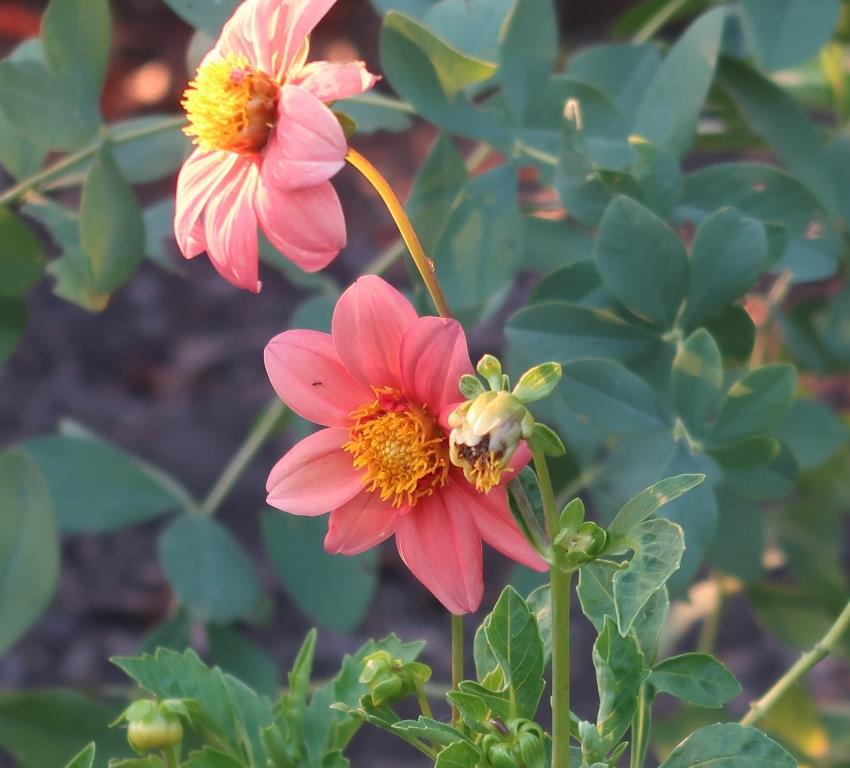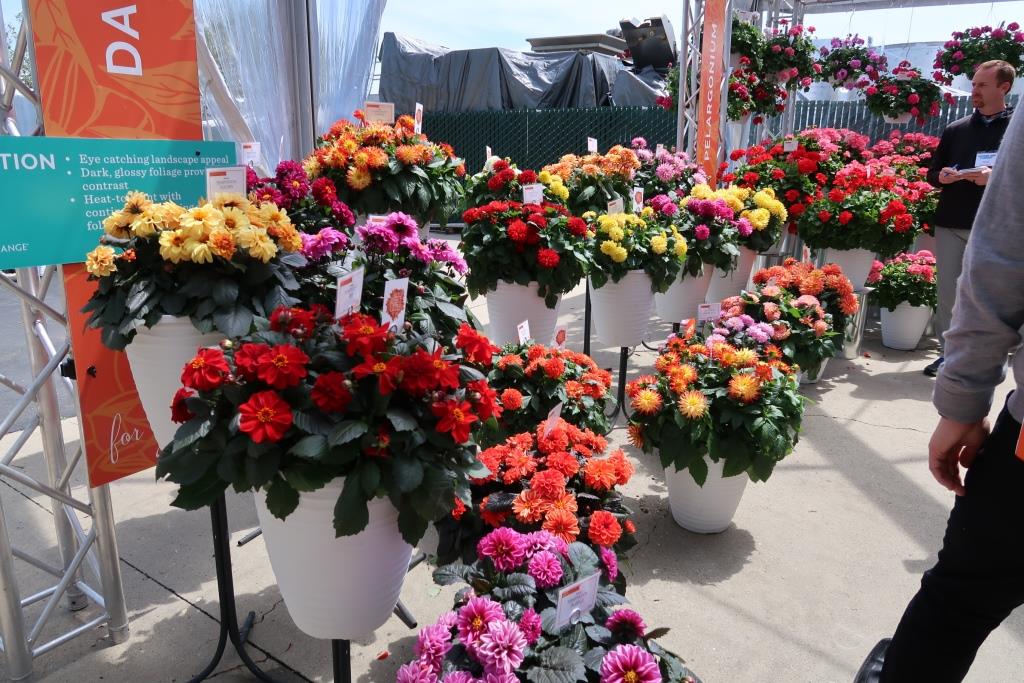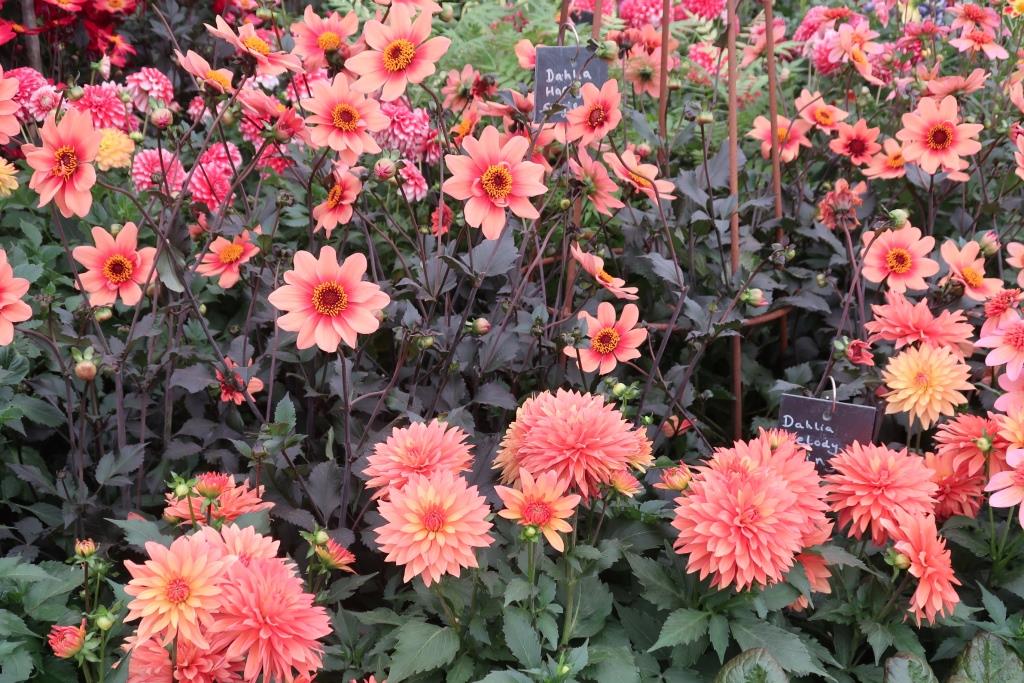Porterweed – Stachytarpheta sp. This tropical member of the verbena family is not winter hardy in Arkansas, but it loves an Arkansas summer. This plant is a magnet for butterflies and hummingbirds and will bloom non-stop from planting until frost. Mature size will vary by species with some growing no taller than 18 inches, while others can grow over six feet tall and four feet wide. Flower color can be purple,
pink, salmon or white. In Jonesboro at the teaching garden, they even had a red one. The individual blooms are small, but they appear on a long, narrow spike.
It does best in full sun, but will tolerate light shade. It is not easily found at local nurseries, but can be found at many Master Gardener plant sales.
Rain Lilies or Zephyr lily – Zephyranthes atamasca
is a low maintenance summer flowering bulb in the amaryllis family. In the wild, they appear and bloom almost miraculously after a rain. In an irrigated home landscape, they can bloom for a longer period of time. Flower color can vary from shades of pink to yellow and white. They do best in full sun or partial shade, in a well-drained soil.
Dahlias
are another summer “bulb” plant that oftentimes we struggle with in Arkansas. While not a true bulb, they are grown from a tuber, which is simply an enlarged root. You can buy them as a dried tuber or as a growing plant in a pot. There are hundreds of varieties,
with flower size ranging from 1 to 12 inches in diameter, and flower colors that run the gamut from pinks, reds, oranges, yellows, whites and many multi-colored forms.
There are singles, doubles and a range of flower shapes to choose from. Dahlias can be grown in Arkansas, but they do require a bit of pampering in hot, humid weather. Most gardeners grow them as annuals or short-lived perennials. While they do need sun to bloom, in Arkansas they would prefer some afternoon shade, and well-amended and well-watered soil. Shorter, and smaller flowering forms often perform better for us, than the showier, tall varieties, but some gardeners have better luck than others.

